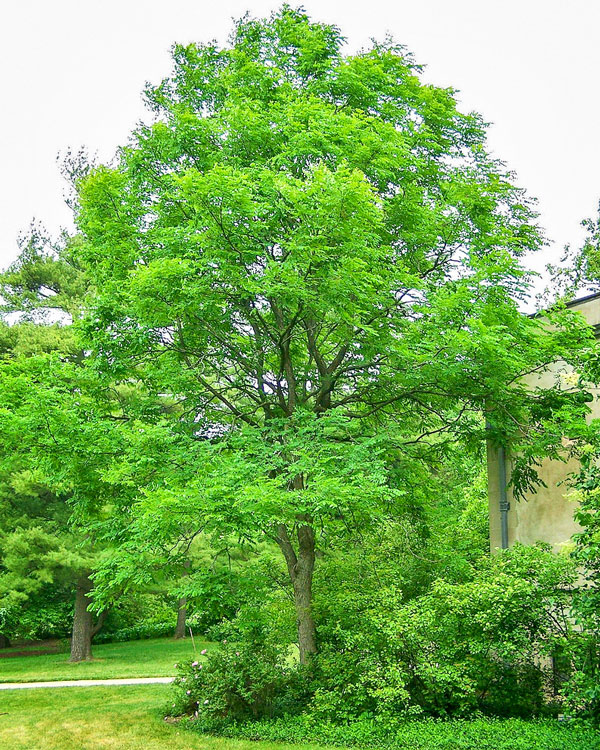Throwing Some Shade on the Homefront
Article and photo by Bryan Goodland

At full maturity of up to 50 feet tall and 40 feet wide, the Kentucky coffeetree is a tough tree that is both heat and drought tolerant and grows well in a wide range of soils – including Colorado’s clay. The leaves, that turn bright yellow in the fall, can appear almost tropical and is considered to be a show stopper that has fragrant white flowers in early summer that mature into large pods. Early settlers of the West actually used the beans from the pods as a substitute for coffee.
Images of a street lined with towering trees whose branches meet in the middle providing a canopy of shade for kids to ride their bikes under helps to create the magic of a suburban neighborhood environment. Not only picturesque, trees can help increase a home’s energy efficiency – especially in a state that has more than 300 sunny days a year.
In Colorado, which trees to plant can be difficult to choose; not every type of tree thrives in the state’s warm and arid climate. Sitting at an elevation above 6,000 feet, the Castle Pines community has the added challenge of hot days and cool nights which adds another wrinkle in planting. Additionally, the clay-infused and rocky soil causes many trees to seek milder climates. However, there are a few shade trees that will thrive in these conditions and many of them can be planted in local neighborhoods throughout the community.
Jim Myer, the forestry operations superintendent for Denver Parks & Recreation, had some suggestions when it comes to planting and choosing trees.
“As we are moving to a hotter, drier climate, consider planting a drought tolerant, hardy tree that can also withstand cold temperatures,” Myer said. Since Colorado has such an unforgiving climate, it’s best to choose a tree that is resilient and able to handle rapidly changing weather conditions. Evergreens, oak and maple trees are popular options throughout the state, but it really depends on the location and what the climate and area will support. The care and feeding of the tree are also important considerations, dependent upon how much effort and expense a homeowner wants to take on with this new addition.
Homeowners also need to take into consideration the overall size of the tree, including not just the height but how wide the branches and foliage will grow. Finding a tree that will provide ample shade and be aesthetically pleasing can be challenging. Location of the tree is an important factor as well, as Myer pointed out, “Roots can be an issue if trees are planted in the wrong location. If the right tree is selected for the right location, then roots are usually not an issue.” As to the expense, homeowners can contract to have the tree planted or tackle the job themselves. Trees tend to go on sale in the early fall months around September and October.
For selecting a shade tree, Myer offered the following advice, “It depends on the desire. Deciduous trees provide dense to dappled shade depending on the species in the hotter months and allow sunlight penetration in the colder months, while evergreens provide shade year-round.”
The Colorado State Forest Service recommends the following shade trees for the Front Range area; English oak, burr oak, swamp white oak, Kentucky coffeetree, bristlecone pine, limber pine, ponderosa pine, the Austrian pine and many other hardy shade trees.